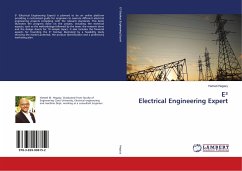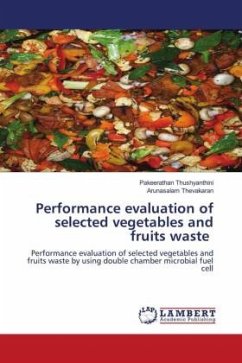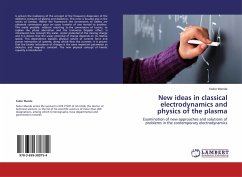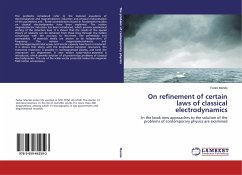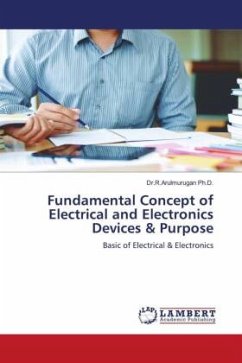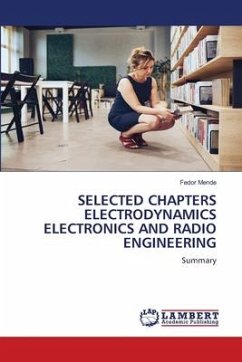
SELECTED CHAPTERS ELECTRODYNAMICS ELECTRONICS AND RADIO ENGINEERING
Summary
Versandkostenfrei!
Versandfertig in 6-10 Tagen
53,99 €
inkl. MwSt.

PAYBACK Punkte
27 °P sammeln!
The concept of the vector potential of the magnetic field in the induction equations is clarified. The concept of the vector potential of the electric field is introduced. It has been shown that the kinetic inductance of charges plays an equally important role in electrodynamics as the dielectric and magnetic permeability. A mathematical model of the dispersion of electromagnetic waves in conductors and dielectrics was developed using a physical value of dielectric permittivity, which does not depend on frequency. It has been shown that transverse plasma resonance can exist in limited plasma. ...
The concept of the vector potential of the magnetic field in the induction equations is clarified. The concept of the vector potential of the electric field is introduced. It has been shown that the kinetic inductance of charges plays an equally important role in electrodynamics as the dielectric and magnetic permeability. A mathematical model of the dispersion of electromagnetic waves in conductors and dielectrics was developed using a physical value of dielectric permittivity, which does not depend on frequency. It has been shown that transverse plasma resonance can exist in limited plasma. The concept of kinetic capacity is introduced. A new method for deriving a wave equation is provided. By recording the induction equations using the substantive derivative, their symmetrical form was obtained. Is introduced the scalar- vector potential, in which the scalar potential of charge and its field they depend on speed. From the symmetrical laws of induction within the framework of Galileo transformations, field transformations were obtained during the transition from one inertial reference system to another, called Mende transformations.



